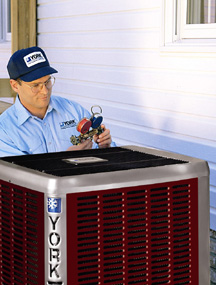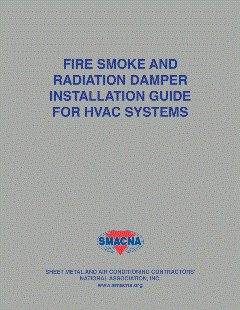NATE (North American Technician Excellence) is a leading industry-supported testing and certification program for heating and air conditioning technicians. Provide your customers with examples that demonstrate the quality of your installation work, such as photographs of previous installations and the name and contact information of previous customers.
Provide proof of insurance (including copies of liability and workers compensation insurance), a copy of your state-issued license, as well as copies of appropriate building permits required to complete the project.
Determine the size of equipment, type of equipment, and specifics of the installation during a home visit.
Properly installed, high-efficiency Energy Star-labeled equipment will save your customers money on their utility bills for many years to come if it is properly installed and maintained.
Don't size units solely on the square footage of the house. If you are replacing a unit, don't assume that the new unit should be the same size as the existing unit. It may not have been sized properly in the first place.
Proper equipment sizing is based on the interior of homes losing heat during cold weather and gaining heat during warm weather. Consider several key pieces of information (such as the type of insulation and the total surface area of the windows or glass doors) into a heat loss/heat gain evaluation called a design load calculation.
The design load calculation involves taking measurements during the initial visit to your customer's home and asking questions. It can be done manually or by using software, but in either case it should be based on professional guidelines such as Manual J from the Air Conditioning Contractors of America (ACCA). After the load calculations are completed, ducts, supply registers, and return grilles can be sized and selected using professional guidelines in ACCA's Manual D or by a comparable industry-accepted method.
Oversized equipment can cause reduced comfort and excessive "air" noise as the oversized unit forces air through your duct system more quickly. Oversizing will also shorten the life of the equipment by causing it to cycle on and off more frequently than a properly-sized unit.
Undersized equipment with airflow that is too low can cause distribution efficiency drops and accelerated wear on system components, leading to earlier failure.

If the unit must go in unconditioned space, ensure that the space is well insulated. Outdoor units should be placed out of the sun and kept free of debris. Also:
- Make sure the unit is installed in an accessible area for easy maintenance.
- Allow plenty of room for free airflow on all sides of the equipment.
- Verify that equipment placement is in accordance with the manufacturer's installation instructions and local codes.
Your customer's system efficiency can be increased by as much as 20 percent by properly sizing, sealing, and insulating ducts. This can also provide more uniform heating and cooling of all of the rooms in their home.
Test your customer's duct system to identify leaks and fix them with quality duct sealant. Duct sealing should be done by using mastic, metal-backed tape, or aerosol-based sealing. Ensure that the duct system is not only sealed, but within conditioned space. If the ducts must be in unconditioned space (basement, attic, crawlspace), they should also be insulated.
In some instances, you may find it necessary to replace or add ducts. If there are insufficient supply registers or return air grilles in your customer's home, it may be necessary to install additional ductwork to accommodate the need for registers or grilles. Sizing for the system will provide the guidelines necessary to determine if additional ductwork is required to supply optimal comfort and should be based on analysis using Manual D.
The test consists of measuring the airflow at the indoor coil, which is installed in the ductwork at or near the furnace or air handler that heats or cools the room air. System testing and any necessary adjustments should be done after duct leakage repairs have been completed.
If airflow is too high, duct leakage increases and the temperature at the register is not sufficient for optimal home comfort. If airflow is too low, distribution efficiency drops and it accelerates the wear on system components leading to premature failure.
Recent field studies suggest that approximately 75 percent of installed cooling equipment may be improperly charged. Improper refrigerant charge can lower efficiency by 5 to 20 percent and can ultimately cause premature component failure, resulting in costly repairs that could have been prevented.
Follow the manufacturer's installation instructions to prevent unnecessary furnace or air conditioner on/off cycling.
Reprinted and excerpted from the Energy Star Web site, HVAC Contractors page, "Offer a quality installation to increase efficiency." For more information, visit http://energystar.gov.
Publication date: 12/13/2004








